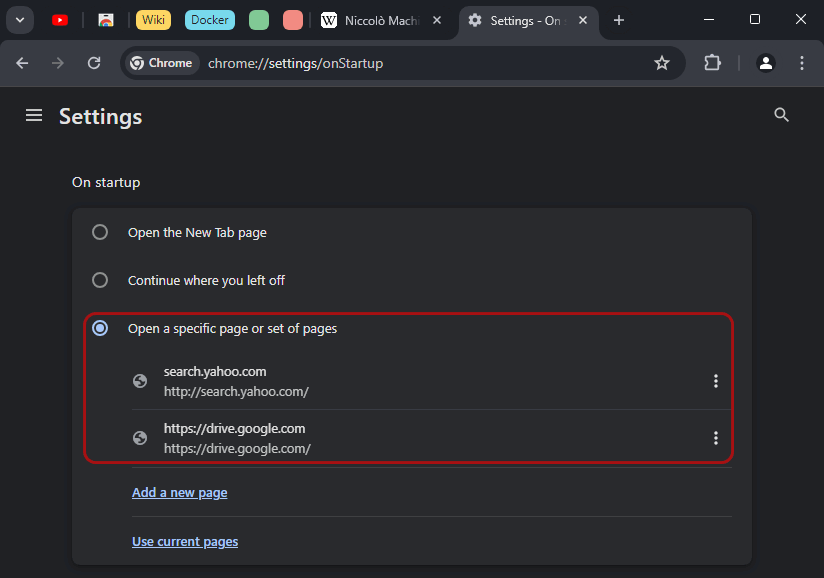Start page in Google Chrome
The start page in a browser most often means one that opens immediately when the program is launched. Typically, this role is taken by one of the search engines. And Chrome, of course, supports such a function. The problem arises when you also don’t want to lose previously opened tabs. In this material, we will consider several options for convenient organization of work with the start page in Google Chrome.

How to create a start page
Next, we will cover both the classic way of creating a start page in Chrome and a more specific one that seems most convenient to us for the user.
Method #1
- It is necessary to open the settings section called “On startup”:
- via the link chrome://settings/onStartup
- through the menu → “Settings” → the item on the left menu “On startup”
- Here there are 3 options, of which we are interested in “Open a specific page or set of pages” :
- select this item, then click on “Add a new page”
- enter the desired website address in the appearing form, which will open together with Chrome startup
- if necessary, the procedure can be repeated if you want to add multiple start pages
Method #2
The main problem with the first method is that you cannot save pages from the previous session. Yes, you can use the function to reopen recently closed tabs, but this is not always convenient. A more flexible option is to use pinned tabs instead of using start pages in Chrome. The main idea is as follows :
- The required start page(s) is pinned in Chrome using the appropriate tab feature
- In the settings page “On startup” select the option “Continue where you left off”
- As a result, pinned pages (tabs) always launch with the browser, while the sites opened in the previous web surfing session are not lost